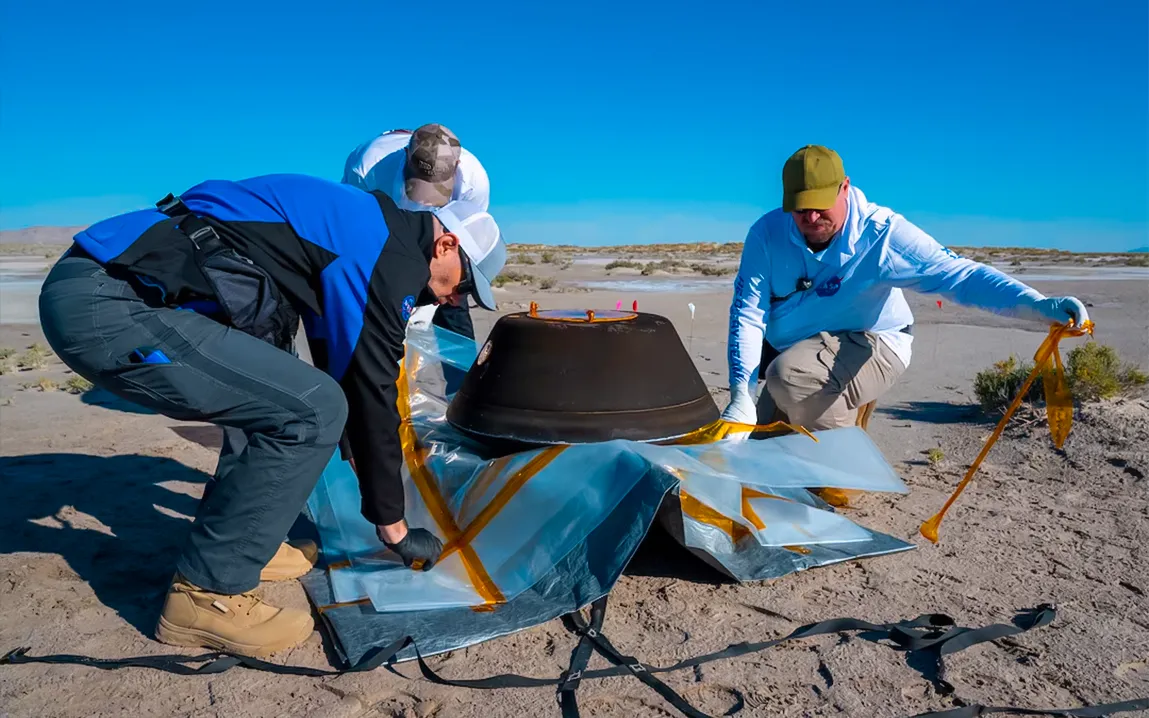In a monumental finding, asteroid samples from the OSIRIS-REx mission by NASA have been returned with building blocks essential for life. The revelation gives great insights into the beginning of life on Earth and beyond the universe.
The OSIRIS-REx Mission
Launched in 2016, OSIRIS-REx was a mission to study Bennu, a carbon-rich asteroid, which is something of a time capsule from the early solar system. The spacecraft reached the asteroid in 2018 after a two-year journey, spent almost two years mapping and analyzing its surface, and successfully collected samples in 2020. These samples returned to Earth in September 2023.
Discoveries Within the Bennu Samples
Among the returned material analyzed, scientists were able to identify a few key components:
- Nucleobases: All five nucleobases were detected: adenine, guanine, cytosine, thymine, and uracil. These molecules provide the backbone of DNA and RNA, carrying genetic information needed for life.
- Amino Acids: Out of twenty amino acids that life on Earth uses to build proteins, fourteen were present. Proteins play a quintessential role in many biological functions, such as enzymes, and give strength to cells by structural support.
- Water-Forming Minerals: Calcite and halite were present, which showed the presence of liquid water on Bennu at a point. These usually form in watery environments and hence are indicative of the fact that the parent body of Bennu may have harbored water in the past.
- Organic Compounds: Ammonium and formaldehyde—the presence of such a compound suggests more complex organic molecule building blocks may be possible under proper conditions.
Implications for Life Origin
These findings give credence to the hypothesis that such asteroids as Bennu might have delivered ingredients vital for life to Earth. The presence of nucleobases and amino acids in extraterrestrial material hints that the basic raw materials for life might have been widespread in the early Solar System. This strengthens the hypothesis that the building blocks of life could be created naturally in space and transported to planets by asteroid impacts.
Bennu’s History and Its Significance
Bennu is thought to be derived from a larger parent body that was formed in the outer Solar System about 4.5 billion years ago. With time, this parent body crumbled because of collisions and gravitational influences and yielded boulders; Bennu is one of them. The composition of this asteroid offers evidence of different solar system sources combined into a snapshot of all that was going into the forming and distribution of the precursors to life across the solar system.
Future Research and Exploration
The pristine nature of the Bennu samples allows, for the first time, studies of the conditions in the early solar system uncompromised by contamination from Earth. Ongoing analyses will also focus on the processes leading to the formation of complex organic molecules and possible similar processes on other celestial bodies.
The result also suggests implications for the quest for life beyond Earth: If the building blocks of life are abundant in asteroids, they could also be expected on other planets and moons, making it more likely that life could arise elsewhere in the universe.
Conclusion
NASA’s OSIRIS-REx mission has delivered a treasure trove of data about the early Solar System and the possible origins of life on Earth. Detection of the building blocks of life in Bennu samples, besides improving the understanding of how life may have begun on Earth, also leads us to new routes for searching for life elsewhere in the universe. As research continues, these results will shape our understanding about the distribution of life and processes that nurture its appearance.



